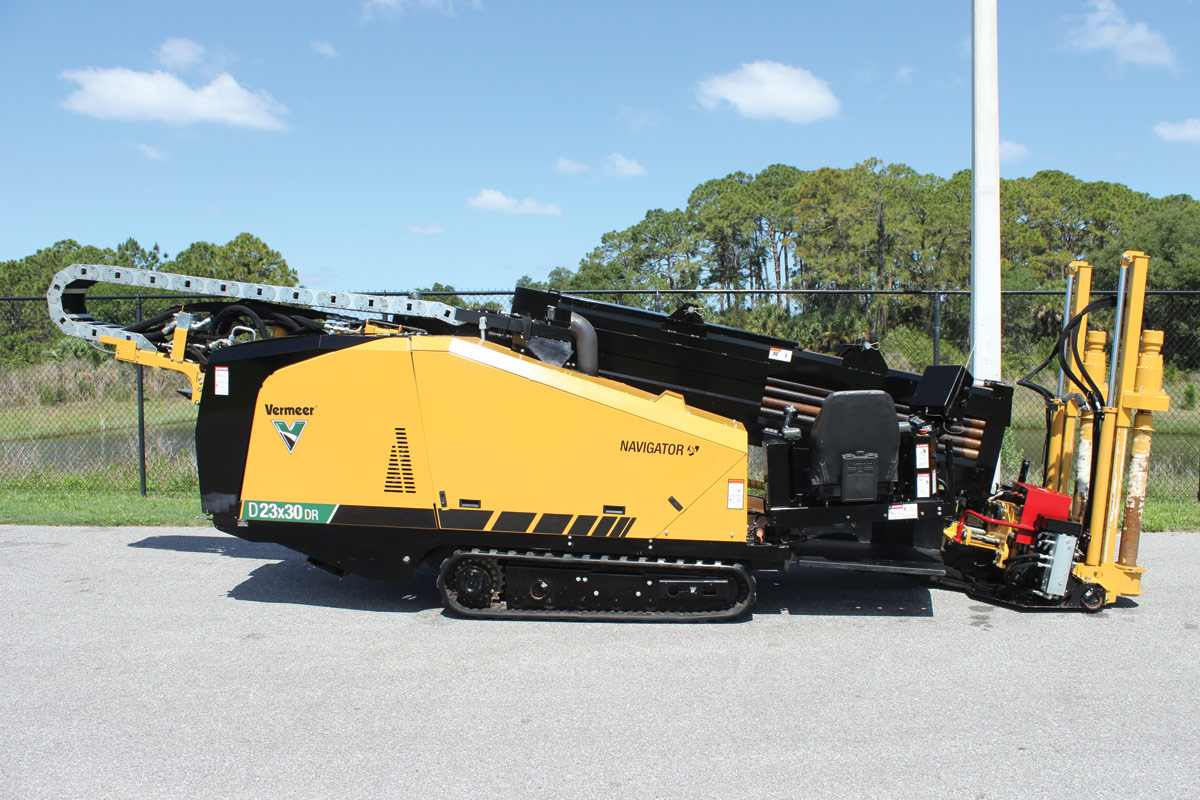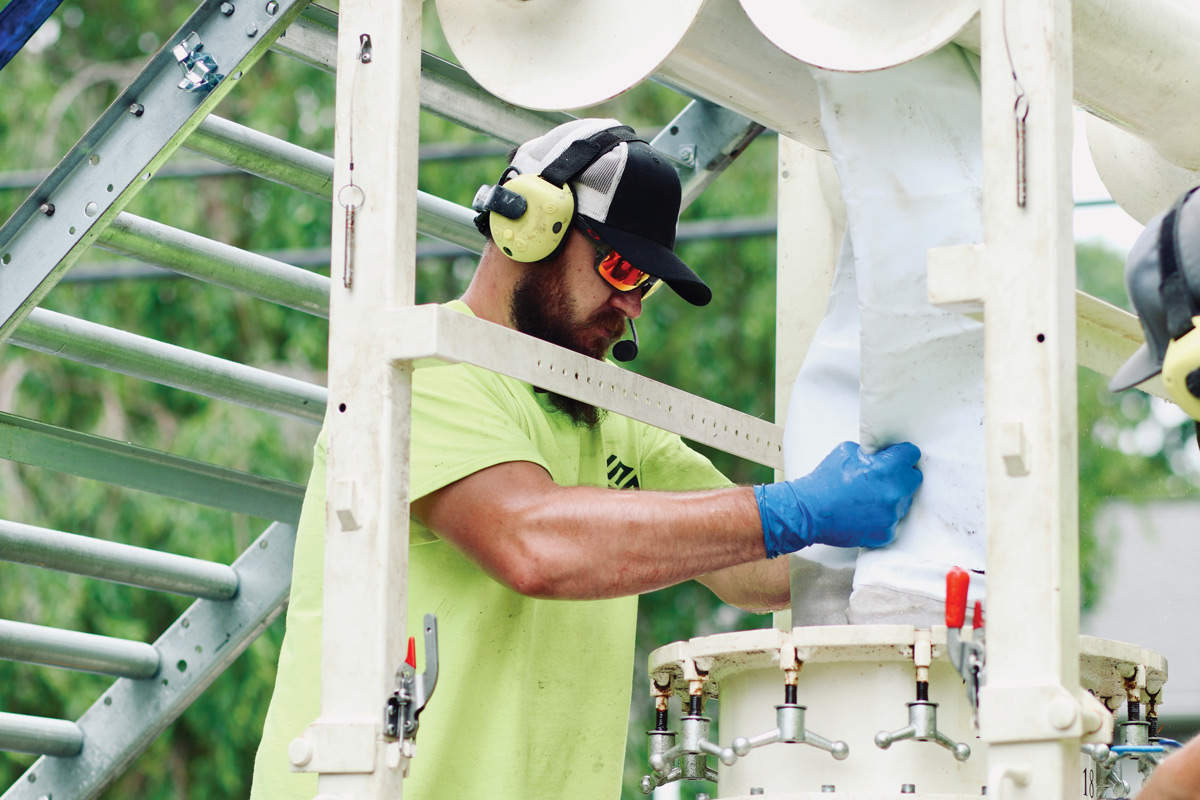
The Numbers Game
April 1, 2008
Figuring out what a project costs is more than just slapping down a number that represents your best guess. It is a much more intricate and precise process that is critical to keeping a business running and, yes, even making a small profit. The factors that need to be considered include everything from labor to equipment to fuel, as well as a host of others.Are contractors taking into consideration all they should when putting together a bid they hope will be the one chosen by the project owner? Or are many leaving money on the table in order to just get the job? Low prices for the directional drilling market would suggest the latter, especially for the compact and mid-size markets. Important items are being left out, leaving many contractors frustrated and others struggling to pay their bills in this low-price market.
You’d think there was a blueprint that every contractor could follow but there isn’t. You’d be surprised how many different ways of determining the price of a directional drilling project are used — or perhaps you wouldn’t, given the state of pricing in the HDD market these days. Everyone seems to have their own formula — what to consider in their price and what garners more weight than others. Some of these formulas work and some, well, probably speak for themselves. Some contractors bid price per foot, while others give an overall price or daily minimum.
What goes into a project price? What should contractors be including when penciling in the numbers on their bid sheets? What mistakes are being made in the process and what can be done to help them? With a tight economy that has seen fuel prices skyrocket, what has the trickle down effect been on items such as petroleum-based pipe like PVC and HDPE and what effect is this having on the HDD market as a whole?
Trenchless Technology spoke with contractors of varying sizes, in varying parts of the United States with varying degrees of experience for their candid perspective, based on what they are witnessing in the market.
 Bidding Mistakes
Bidding MistakesWhat factors do contractors miscalculate or eschew when putting a bid together? Most contractors point to the risk factor — as in underestimating it. They also underestimate the wear-and-tear of equipment and some don’t know their true operating costs. All these factors have led to much lower bids in recent years.
“A lot of contractors out there do not have a good handle of what it really costs them to operate every day. We know what it costs us to operate daily,” says Bruce Hubbard, project manager with Enterprise Trenchless Technologies Inc. (ETTI), Lisbon Falls, Maine. “If you don’t keep good track of what that operating cost is, such as what it costs to replace a rack of drill pipe in today’s market, and put money aside to replace equipment, when it happens, you don’t have it because you have cut yourself short in estimating your projects.”
You have to keep in mind that every project is different and they have to be looked at individually. “You have to look at the project in its entirety. Pricing per foot is a cheap way of getting into trouble,” Hubbard says.
For a daily cost, what you have to determine is at what point is it not worth it to roll your rig out to a project. “At some point, it’s really not worth going after that job,” Hubbard says. “The return isn’t high enough to make it worthwhile to take the rig out and risk having that kind of wear and tear.”
But one of the biggest mistakes contractors, particularly smaller ones, are making is that they are reacting to the slowing economy. “The biggest mistake that people are making right now is that they are panicking to keep their crews busy,” says Randy Bratcher, general manager with Trenchless Specialties Inc., based in Orlando, Fla. “We see prices in our market just diving [because of it]… In general, the mistakes I see are underestimating the complexity of a job, not having good information on soil conditions and just being too aggressive and feeling like you have to put that rig to work. We see people pricing difficult bores very, very aggressively where you wouldn’t have seen that before.”
The decision to bid projects aggressively — or in other words bid them low — can be costly to the HDD industry. Not only are the bid prices in a tailspin, but safety becomes an issue. Are these low-bid contractors, sometimes inexperienced, doing everything they are supposed to or are they cutting corners with not so good results?
Utility strikes devastate the reputation of the HDD industry — in pricing and in permitting its use on projects. Some U.S. cities and towns have banned its use, such as in Middleport, Ohio (although this was the result of a crossbore incident when an excavator tapped into a gas line, not a driller). Legislation has been proposed in Ohio that would require verification of utility locations by potholing when crossing or paralleling existing utilities. Pricing was one of the factors that led to the requirements being included in the proposed legislation.
According to the Ohio Utilities Protection Service (O.U.P. S.), contractors factoring adequate safety measures into their bids were being undercut by bidders possibly not adhering to the good practices guidelines — something the Ohio HDD Association concurs with.
The Ohio HDD Association supports the legislation, which had some of its language gleaned from the “Horizontal Directional Drilling Good Practices Guidelines.” Pennsylvania also requires drillers to follow procedures outlined in the “HDD Good Practices Guidelines.” Ohio HDD Association president Valerie Rogers says the association helps Ohio drillers by monitoring the safety issues to ensure that drillers in the state are following the drilling practice guidelines, which in turn it hopes will help ensure fair pricing in the long run.
“Utility hits are certainly driving down our costs because the utility companies are having to cover for those hits and in the long-term, the engineers are not allowing directional drilling to be an option for installation in their contracts,” says Rogers, who with her husband, Mark, own Integrity Boring in Bremen, Ohio.
She says the association also tries to monitor whether companies are paying their workers the prevailing wage that was specified in project bids. “Ohio has more drillers than any other state and the competitiveness is very strict. We are finding that many drillers typically aren’t following the good practice guidelines, are not following Ohio laws by not paying the labor what they need to by law. And there’s no one to hold them accountable.”
The Northeast Trenchless Association (NTA) is also trying to get drillers a better handle on understanding their true costs for a project. ETTI’s Hubbard, who is also NTA president, sees this issue, as well as safety issues, as NTA’s mission.
“We’re trying to keep people informed on how they should be thinking and hopefully they don’t just go out there and bid a bad market just to keep their rigs running,” he says.
But there are contractors willing go that route: They win the bid but at the end of the day, aren’t making any money and are only thinking about keeping their crews busy. There are times when contractors need to know when to walk away from submitting a bid.
“You absolutely have to know when to walk away,” says Mark Rogers. “We’ll walk away and say no thanks because we are not just going to bid a job to bid a job. We’re going to bid a job to make money.”
Integrity Boring works in the compact market and has seen the effect of aggressive, low bidding getting out of control in the public works market. The Rogers have steered clear of those projects in recent years, concentrating on private projects. However, he notes that in a lot of cases, Integrity Boring isn’t the prime contractor and they are subject to the subcontractor rate.
Price Factors
So what are the most important criteria that get factored into a price? Depends on whom you ask. There’s always the cost of labor and the costs associated with the general overhead and insurance/liability. After that, folks put different levels of importance on different areas. Some say the ground conditions are a significant factor, while others say it’s the overall risk involved in the project. Replacement costs and the everyday wear on equipment are also vital.
“It depends on what kind of job it is,” says Mark Rogers. “If it’s a job where the customer is providing the materials, it’s nothing but the labor and the mud. If we’re responsible for traffic control, that would be added in. It also depends where the job is located — can we only work certain hours because it’s along a highway or only at night, which would involve lighting. Then there’s tooling. Is it a job that requires tooling that we already have or do we have to buy? And we have to factor in the wear-and-tear and breakage costs.”
Other numbers that get plugged into the spreadsheet include insurance costs, fuel for the rigs, drilling fluids, cost of vehicles, out-of-town expenses (if needed) and the biggest wildcard of all — risk. Risk is a small word that can encompass a multitude of factors, depending on the job and what the contractor considers to be a risk. Risk can involve many things from existing buried utilities or the possible loss of equipment or tooling. Risk can involve the area where the work is being done, such as under a river or railroad tracks, for example, or in a high-traffic area.
“When I put a proposal together, risk is a big thing I think about,” says Bratcher. “And when I’m talking about risk, I’m referring to damaging utilities. Without X-ray vision and even with incredible utility studies, there’s still that unknown.”
ut can you put a price tag on something that’s unknown? “That’s a great question,” says Bratcher, who’s been in the business since 1995 and mainly handles mid-size market HDD work. “It’s based on our experience on what we feel is the risk. It’s all opinion. But if we’ve drilled there before and we have good locates and we are comfortable, we view the risk may be at one level. If we view it at a different level, we price it accordingly. It’s really a gut thing. We don’t have a set thing that says this is a risk factor 4, so we are going to add 30 percent to the price. We just try to use our best judgment.”
Bill Tippett, president and owner of Networx Cabling Systems Inc., based in Flagstaff, Ariz., talks about risk in similar fashion. “How do you put a number on risk? We really have a difficult time with that. Because then you have to consider where [your bid] lands competitively,” he says. “Risk encompasses the hope you don’t lose tooling, that ground conditions stay consistent — basically anything that might delay a project and/or drive up its cost. You have to weigh those variables against what is going to be an acceptable price for the project.”
Another problem is the slowing down of the economy and the inflation of costs such as fuel, labor and insurance — project bids haven’t caught up. “The pipe we are using is a petroleum-based HDPE. The cost for that has gone through the roof the last few years and has really driven costs up on the materials side. Unfortunately, I don’t see the prices coming up quick enough to offset those additional costs — at least not in central Ohio,” Rogers says.
In today’s market, which has seen HDD prices anywhere from 15 to 30 percent lower than several years ago, contractors are seeing more and more money left on the table by those winning the bids — and that’s bad for the market in general and in the long run bad for the contractor who accepts those bids. Why? Because they are not factoring in items that will in the end cost them their business: wear-and-tear of equipment, replacement cost for lost tooling and not appropriately weighing risk.
“What’s really disconcerting to us is to see [contractors] leaving so much on the table between our bid and their bid,” Tippett says. “They have a right to do that certainly. It’s a free market and they are winning the projects for themselves in the short run, but I think they are hurting the industry in the long run and hurting guys who are going to be in it for the long run.
“When all is said and done, when you factor in your costs, then you go to the market and see what the market can bear,” Tippett continues “Nobody is out to gouge anyone but certainly we look to see if there is an opportunity to realize economic profit… It’s just like any other business. You want to be profitable as much as you possibly can but don’t want to do it at the risk of creating a problem in the market and/or losing the bid. So after we figure our costs to operate, then we ask ourselves, ‘What’s it worth to us to get this project? What’s the appropriate reward for the risk we are taking?’”
Sharon M. Bueno is managing editor of Trenchless Technology.




